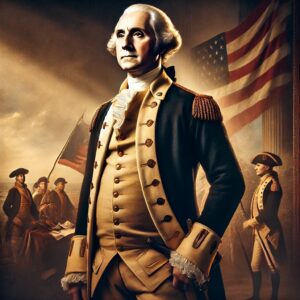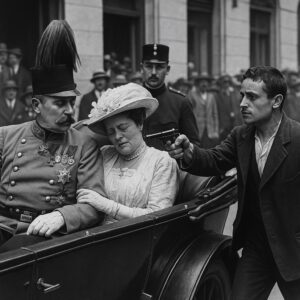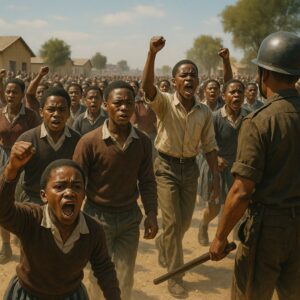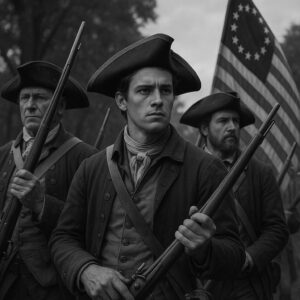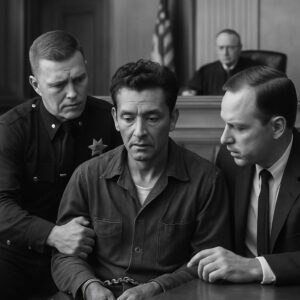
Every year, as June rolls in and the days grow longer, a remarkable natural phenomenon quietly unfolds across the Northern Hemisphere — the Summer Solstice. This event, which typically falls on June 21, marks the official beginning of summer and brings with it the longest period of daylight of the entire year. More than just an astronomical occurrence, the summer solstice is a celebration of light and warmth, an emblem of nature’s eternal cycles, and a moment steeped in history, culture, and awe-inspiring phenomena that connect us to the cosmos and to our shared human past.
On that day, if you wake up early enough in many parts of the Northern Hemisphere, you will find the sun already high in the sky, casting golden light across fields, forests, and cities. The sunlight seems to stretch endlessly into the evening and beyond, sometimes barely dipping below the horizon in places far north, creating the ethereal glow known as “civil twilight.” This uninterrupted presence of the sun bathes the world in an abundance of warmth and light, transforming landscapes into vibrant scenes of growth and vitality. The phenomenon occurs because of the Earth’s axial tilt — about 23.5 degrees from the plane of its orbit around the sun — positioning the Northern Hemisphere closest to the sun during this period. This tilt causes the sun’s rays to strike this part of the planet at their most direct angle, and the day itself becomes the longest in terms of sunlight.
The summer solstice is far more than a simple astronomical event. Its meaning and significance stretch back thousands of years, deeply embedded in the cultures, rituals, and beliefs of ancient civilizations. From the mysterious stone circles of Stonehenge in England to the monumental pyramids of Egypt, from the intricate temples of the Maya and Aztec peoples in the Americas to the sacred sites in Asia and Scandinavia, the solstice was observed with reverence and wonder, its arrival marked with elaborate ceremonies and celebrations. These ancient peoples recognized the importance of the sun’s cycle — the source of life and the determinant of seasons — and aligned their monuments and festivals with its movements.
Stonehenge is one of the most iconic examples of this ancient reverence. Built over 4,000 years ago, this massive stone circle was carefully designed so that on the summer solstice, the sun rises directly over a particular stone known as the Heel Stone, casting its first rays into the heart of the monument. To the people who built it, this precise alignment was no accident; it was likely a powerful symbol of rebirth, fertility, and the cyclical nature of time itself. Even today, thousands of visitors and spiritual seekers gather at Stonehenge every June 21 to witness this alignment and to honor the connection between humanity and the greater cosmos. It remains a vivid reminder that even in prehistoric times, humans were attuned to the rhythms of the heavens and found meaning in the dance of light and shadow.
But Stonehenge is only one chapter in the vast story of solstice celebrations. In ancient Egypt, the summer solstice marked a time tied closely to the flooding of the Nile, a natural event that fertilized the land and allowed civilization to flourish. Temples were oriented to catch the solstice sun, and festivals celebrated the life-giving power of the sun god Ra, whose strength was believed to peak during this time. Similarly, in Mesoamerica, civilizations such as the Maya and Aztecs constructed temples and pyramids that aligned with the solstice sun. The Mayan pyramid at Chichen Itza, for example, casts a famous serpent-shaped shadow during the solstice, symbolizing the descent of Kukulkan, a feathered serpent deity associated with renewal and the cyclical flow of time.
Across Europe, the solstice has been celebrated for millennia as well. The ancient Romans observed “Litha” or “Midsummer,” a festival honoring Sol Invictus — the unconquered sun. It was a time to celebrate strength, vitality, and the peak of the sun’s power. Scandinavian countries continue to observe Midsummer festivals with bonfires, singing, dancing, and feasting — traditions that stretch back to pagan times and were later woven into Christian midsummer celebrations honoring saints like St. John. These festivals emphasize the joy of life, the abundance of nature, and the community’s connection to the changing seasons.
In Asia, the solstice also carries significance in traditional customs and ceremonies. In China, for example, the summer solstice is associated with the yin-yang balance of nature, emphasizing the harmony between the forces of light and darkness. It marks a time of abundance and growth, often celebrated with offerings and rituals aimed at ensuring a bountiful harvest. Japan, too, recognizes the solstice in cultural practices that honor the changing seasons and the natural world, highlighting the connection between human life and the rhythms of nature.
For those who live close to the land — farmers, gardeners, and outdoor enthusiasts — the summer solstice is a critical moment in the agricultural calendar. It signals the peak of the growing season, a time when crops are nourished by long, bright days and the warmth of the sun. Fields of wheat, corn, and other staples thrive under the intense sunlight, while fruit trees swell with ripening fruit. The solstice represents a culmination of spring’s growth and the promise of harvests to come. Even today, many traditional farmers and gardeners observe this day as a marker for tending crops, performing rituals for fertility, or simply appreciating the height of nature’s vitality.
Yet, beyond its practical importance, the summer solstice carries a deeper, almost mystical significance. It embodies the rhythm of life and the passage of time, reminding us of the cycles that govern our world and our place within the vast universe. The Earth’s tilt and orbit create this grand cosmic dance — a yearly turning point when light reaches its zenith before gradually retreating. This cycle mirrors many aspects of human experience: the heights of joy and vitality, the inevitability of change, and the hope for renewal that comes after every decline.
This duality — the sun’s light peaking, only to begin its slow fade — is a poignant metaphor. It speaks to the transient nature of existence and the eternal cycle of death and rebirth. Ancient cultures may not have had the scientific knowledge we do, but they understood this truth in their own way, crafting myths, ceremonies, and monuments that celebrated both the sun’s power and its eventual surrender to darkness. In many ways, the solstice serves as a universal reminder of our own cycles of growth, peak, decline, and renewal.
In the modern world, where artificial light and fast-paced living often obscure our connection to nature’s rhythms, the summer solstice offers a chance to slow down and reconnect. People across the globe mark the day with a variety of contemporary celebrations. From yoga retreats that greet the dawn with mindful meditation and gratitude, to music festivals that embody the spirit of light and community, the solstice remains a powerful symbol of hope, renewal, and human connection.
Many gather outdoors to watch the sunrise, savor the extended daylight, or light bonfires as a nod to ancient traditions. Some take the opportunity to practice gratitude, recognizing the sun as a source of life and energy. Others use the day to step back from daily routines and reflect on their own personal cycles — their achievements, struggles, and hopes for the future. In this way, the summer solstice transcends its astronomical roots and becomes a deeply personal and communal celebration.
Scientifically, the summer solstice is a specific point in the Earth’s orbit around the sun, when the sun reaches its highest position in the sky at noon. After this day, the Northern Hemisphere begins its gradual tilt away from the sun, and the days slowly shorten until the winter solstice. Yet, culturally, it is far more than a mere astronomical marker. It embodies the theme of transformation — the turning point when light begins to wane and darkness gradually returns. This balance between light and dark, growth and decline, is reflected in countless cultural expressions, myths, and rituals around the world.
For example, in Celtic tradition, the solstice was linked to the god Lugh, associated with light, craftsmanship, and kingship. Celebrations involved fire ceremonies to honor the sun and encourage fertility. In Baltic cultures, the festival of Joninės or Rasos celebrated the solstice with music, dance, and rituals to harness the sun’s power and ensure prosperity. Indigenous peoples of North America observed the solstice with various ceremonies, often involving sun dances or other rites aimed at harmony with the natural world.
The solstice also holds a strong presence in art, literature, and music. Poets have long been inspired by the longest day’s symbolism of light, life, and fleeting beauty. Artists depict the golden hues of solstice sunrises and sunsets, evoking feelings of warmth, hope, and connection. Musicians compose pieces that capture the energy and mystery of this day, blending ancient themes with modern sensibilities.
In a world increasingly dominated by technology and artificial light, the summer solstice invites us back to a more primal relationship with nature. It reminds us that despite all human achievements, we remain part of a larger cosmic order — one shaped by the sun’s light and the Earth’s movements. This connection to the natural world offers solace and inspiration, encouraging us to live in harmony with the seasons and appreciate the gifts of each day.
Imagine standing outside on a clear June morning, feeling the sun’s first rays warm your face as they spill over the horizon. The air is alive with the sounds of birds greeting the day, the gentle rustle of leaves stirred by a light breeze, and the distant hum of life awakening. As the sun climbs higher, its golden light transforms everything it touches — the grass glows vibrant green, flowers open their petals wide, and the world feels charged with energy and possibility.
As the day stretches on, the sun lingers in the sky, refusing to retreat. This endless daylight allows more time for outdoor gatherings, celebrations, and moments of quiet reflection. People picnic in parks, hike through forests, swim in lakes, and simply bask in the warm sunlight. Children play late into the evening, reluctant to end a day filled with light and joy. The solstice is a time when nature feels most alive, and we are invited to share in its abundance.
But as the sun finally sets — perhaps later than you ever remember — there is a gentle reminder that change is always near. The darkness returns, slowly but surely, and the cycle begins anew. This transition embodies the eternal dance between light and shadow, joy and sorrow, life and death. The summer solstice teaches us to embrace this flow, to honor the heights of our experience while preparing for the inevitable shifts ahead.
In essence, the summer solstice is a profound celebration of the human spirit and our enduring connection to the cosmos. It is a day to cherish light and life, to honor ancient wisdom, and to find meaning in the cycles that shape our existence. Whether observed through ancient rituals or modern festivities, the solstice remains a timeless reminder that we are part of a vast and beautiful universe — one in which every ray of sunlight tells a story of survival, renewal, and hope.
So on June 21, as the sun lingers longest in the sky, take a moment to step outside, breathe deeply, and look up. Feel the warmth of the sun on your skin and the timeless rhythm of the Earth beneath your feet. Remember the generations before you who celebrated this day with awe and gratitude. Join the millions who still honor this sacred moment of light, life, and cosmic connection. In the unbroken chain of human experience, the summer solstice shines as a beacon — a celebration of summer’s arrival, the power of the sun, and the enduring dance between Earth and sky.


